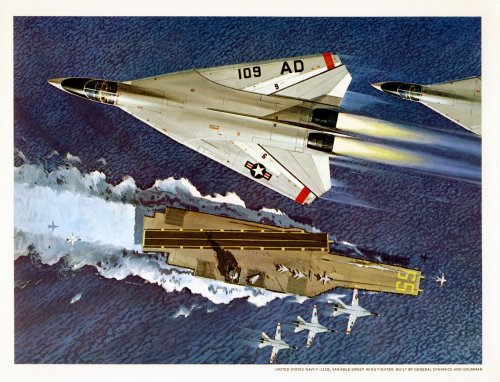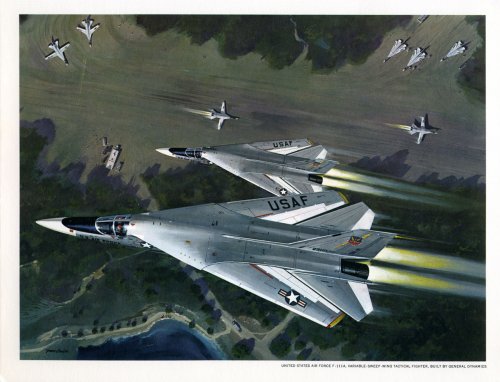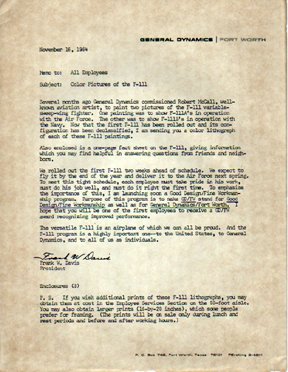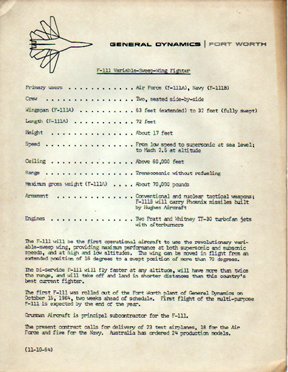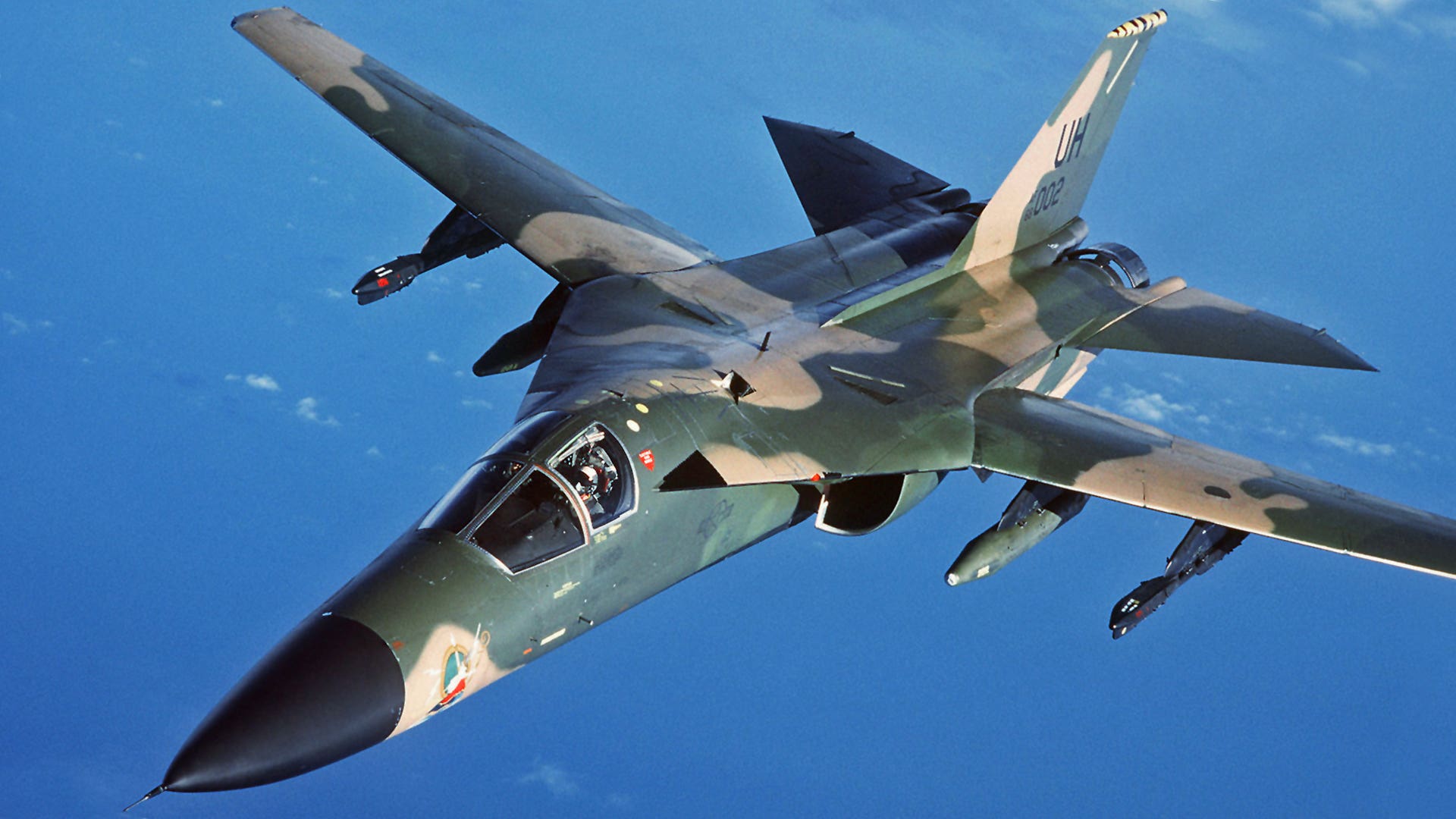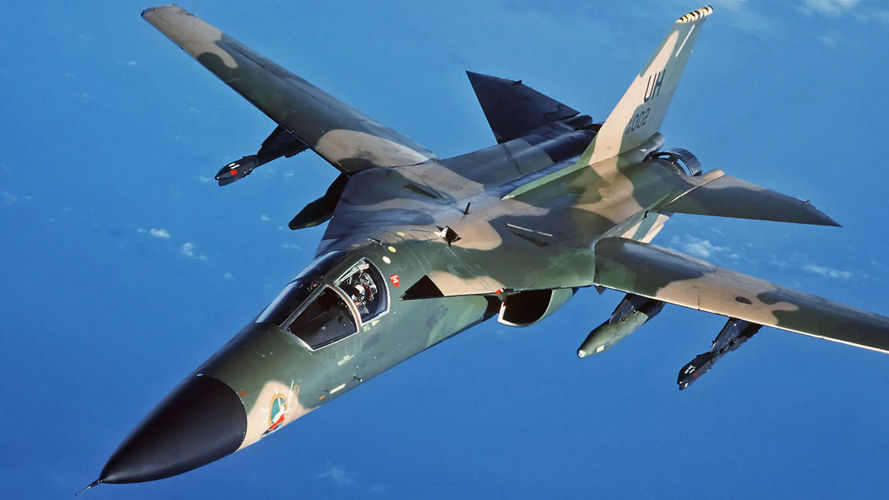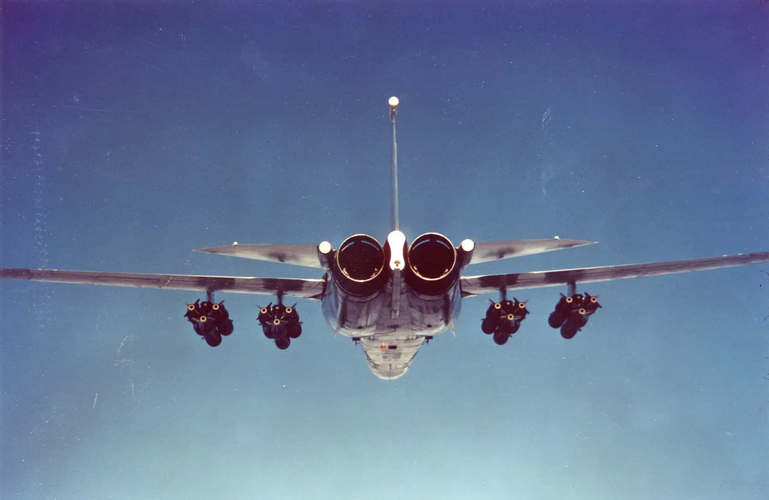- Joined
- 1 April 2006
- Messages
- 10,726
- Reaction score
- 6,734
This is a pair of lithograph prints of the F-111 by the artist Robert McCall.
In early 1964, prior to the introduction, General Dynamics commissioned Robert McCall to paint two pictures of the F-111 in the Navy and Air Force colors.
This pair was presented by the GD President Frank Davis to all the employees on November 16, 1964 as explained by the original letter. Along with the prints and presentation letter was a fact sheet about the F-111 and the original post marked envelope.
In early 1964, prior to the introduction, General Dynamics commissioned Robert McCall to paint two pictures of the F-111 in the Navy and Air Force colors.
This pair was presented by the GD President Frank Davis to all the employees on November 16, 1964 as explained by the original letter. Along with the prints and presentation letter was a fact sheet about the F-111 and the original post marked envelope.

